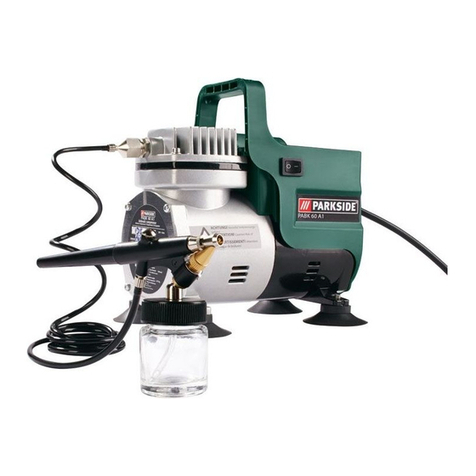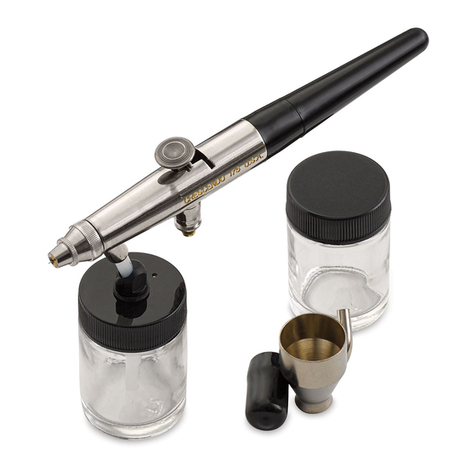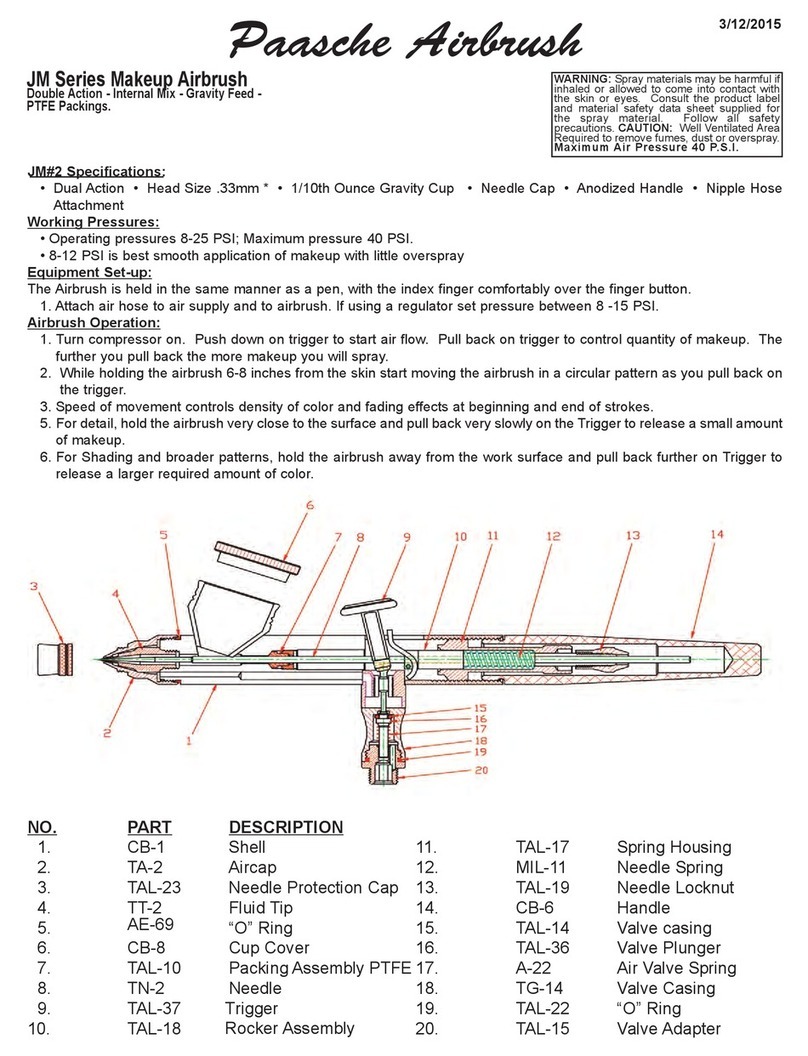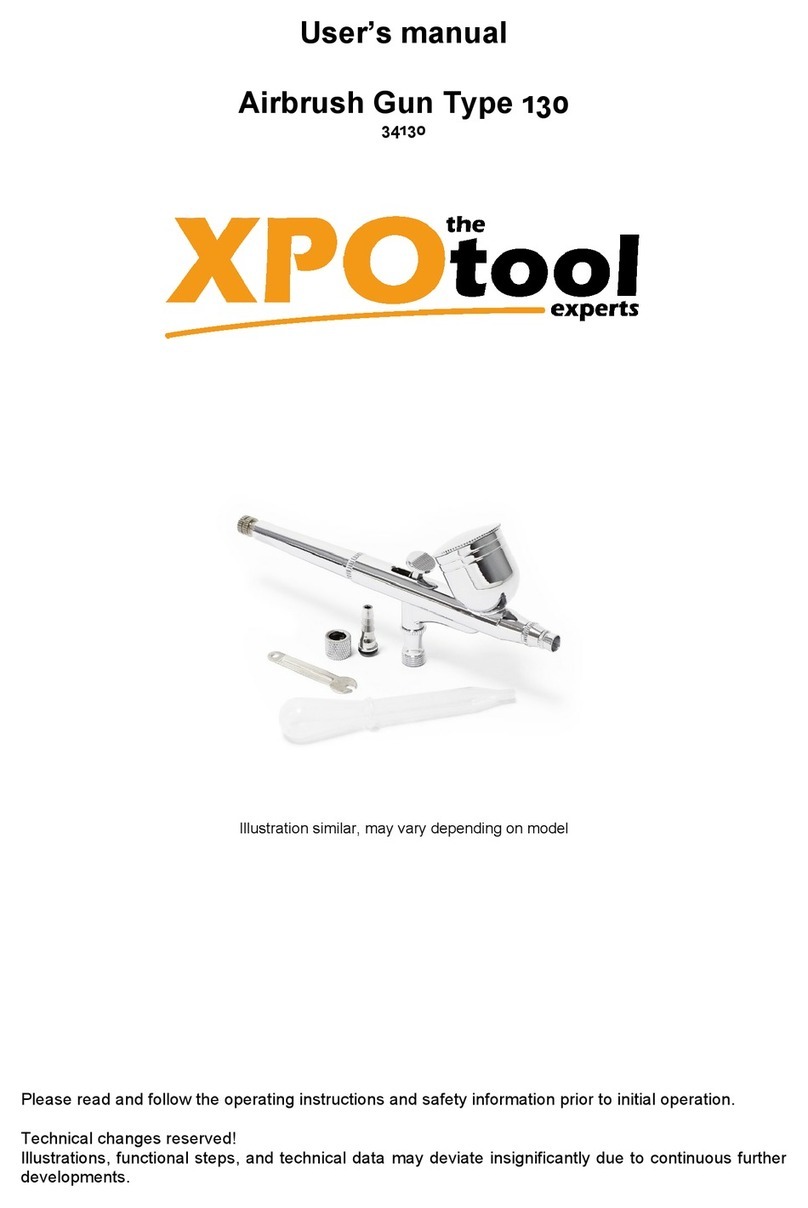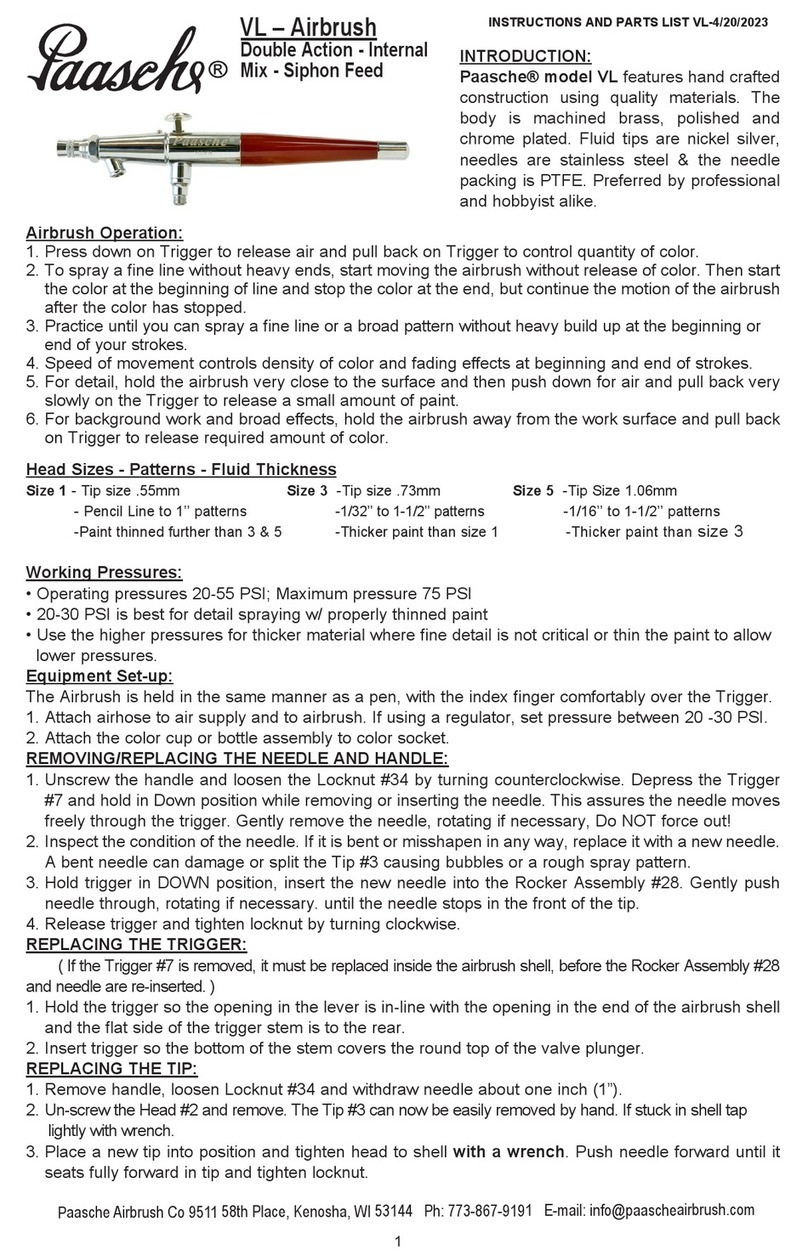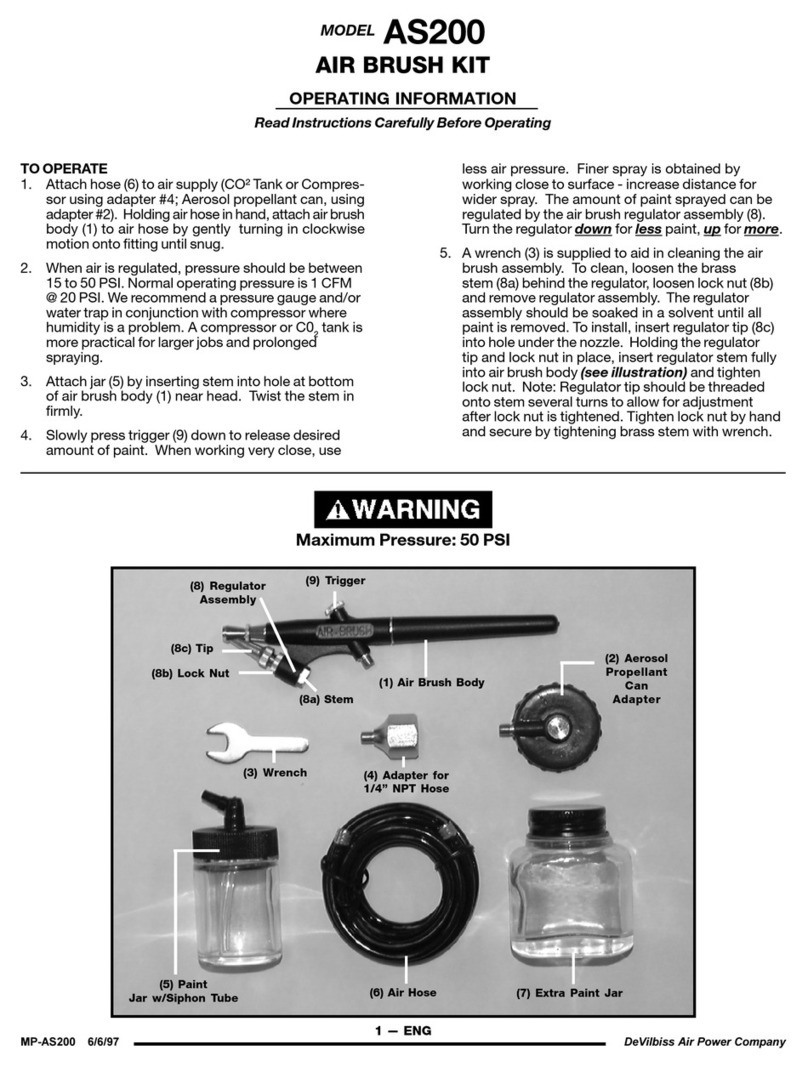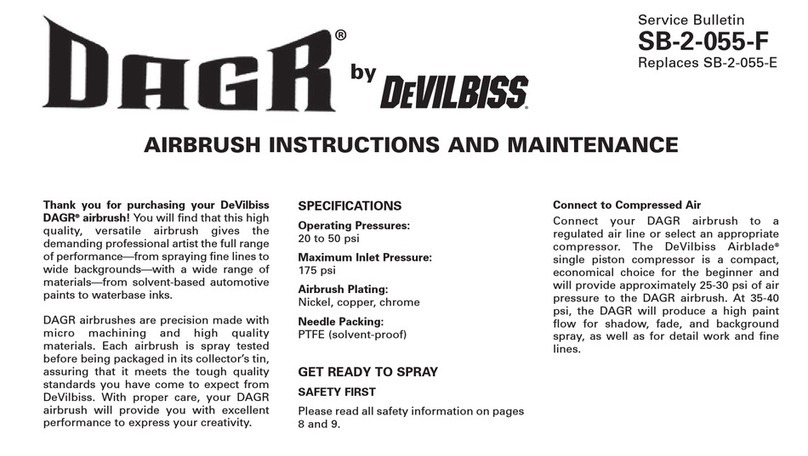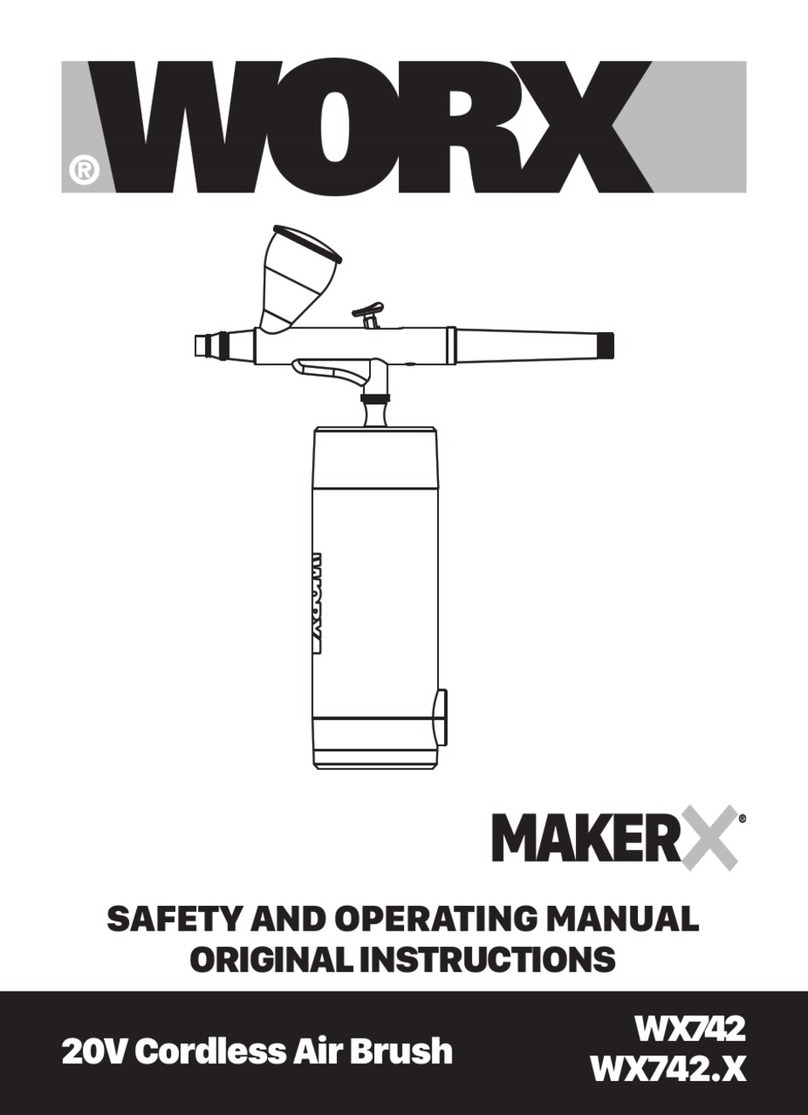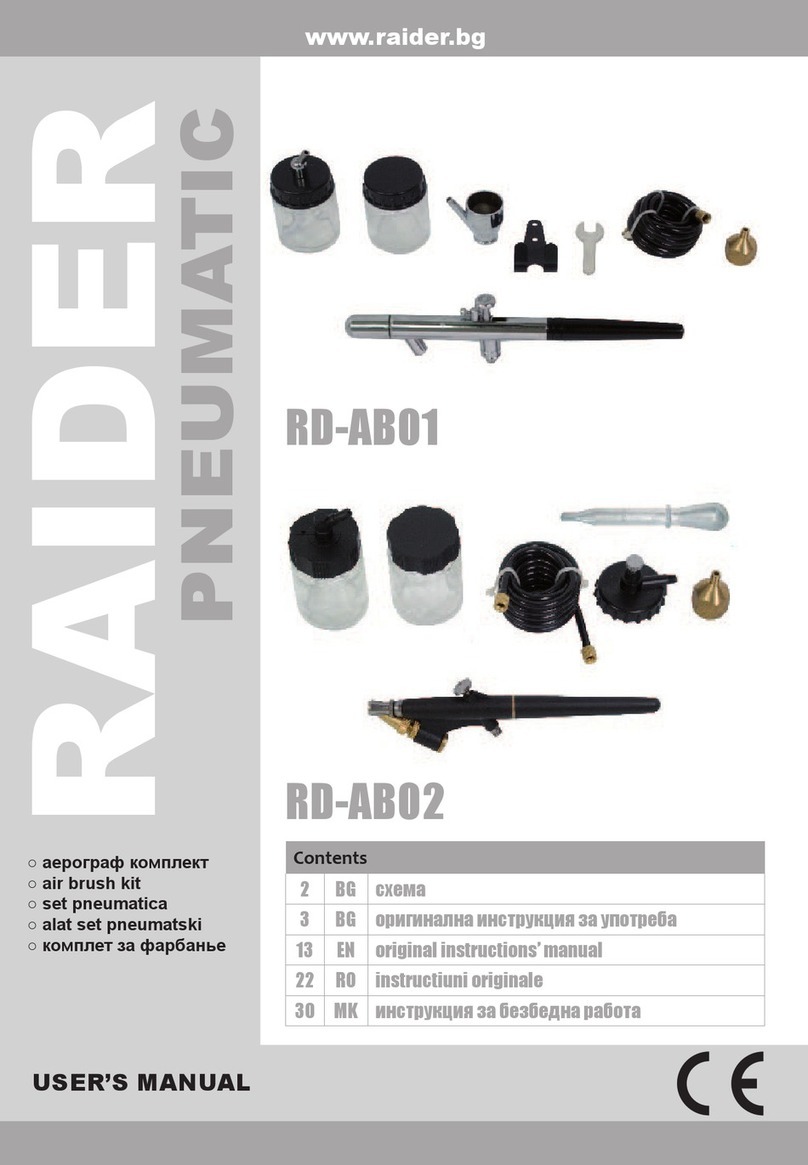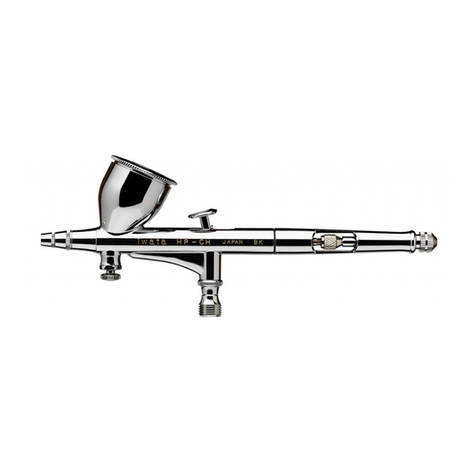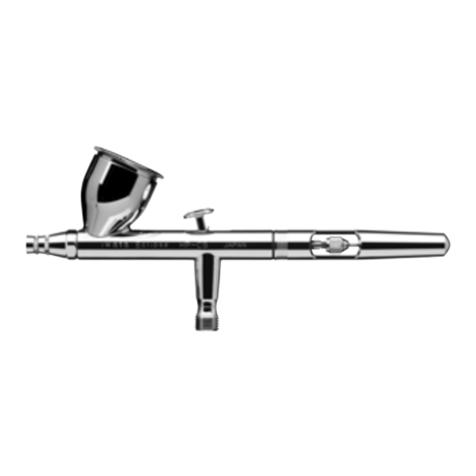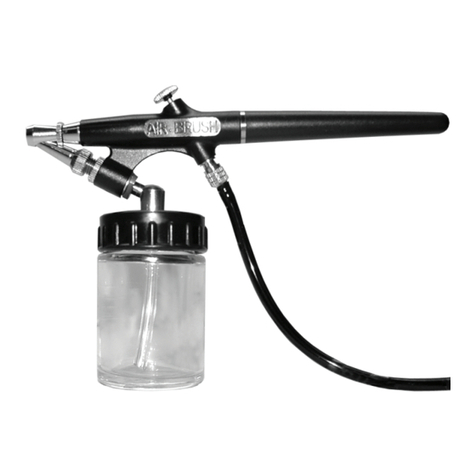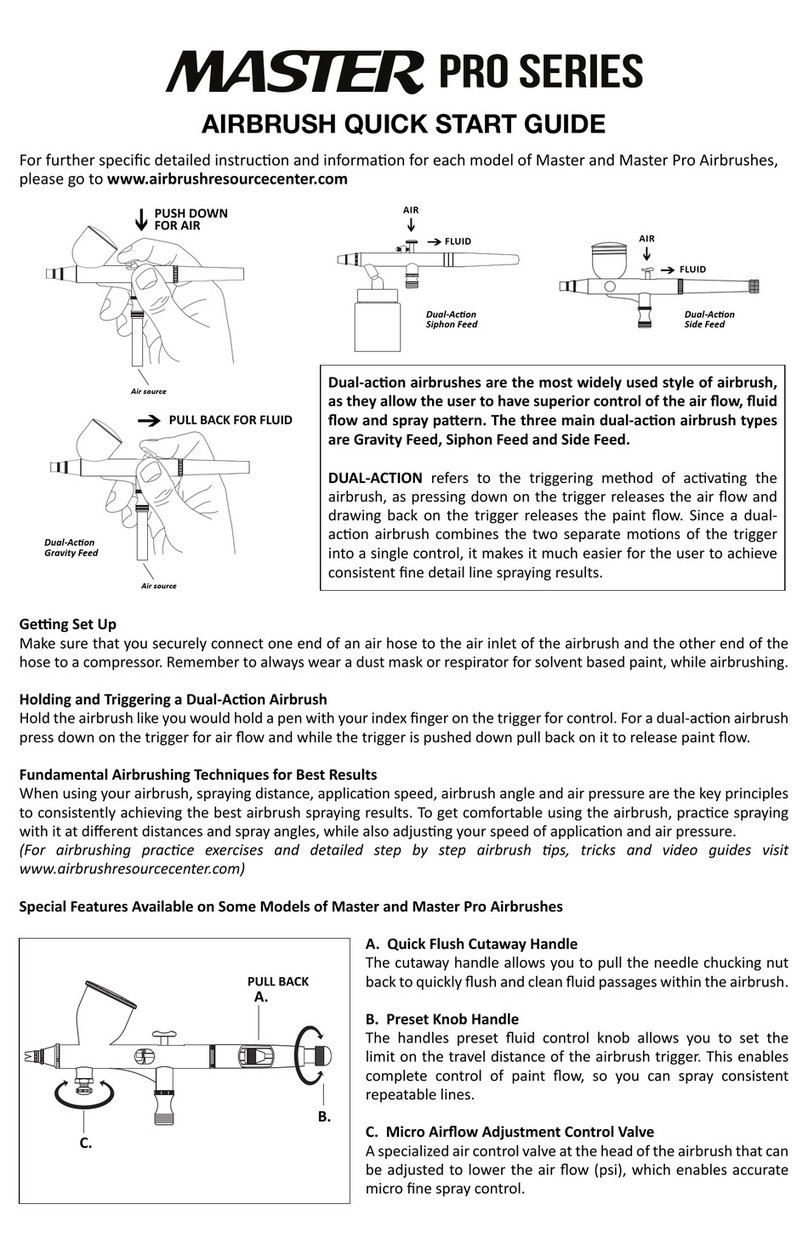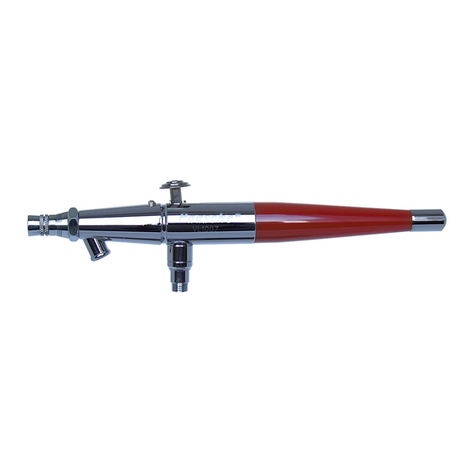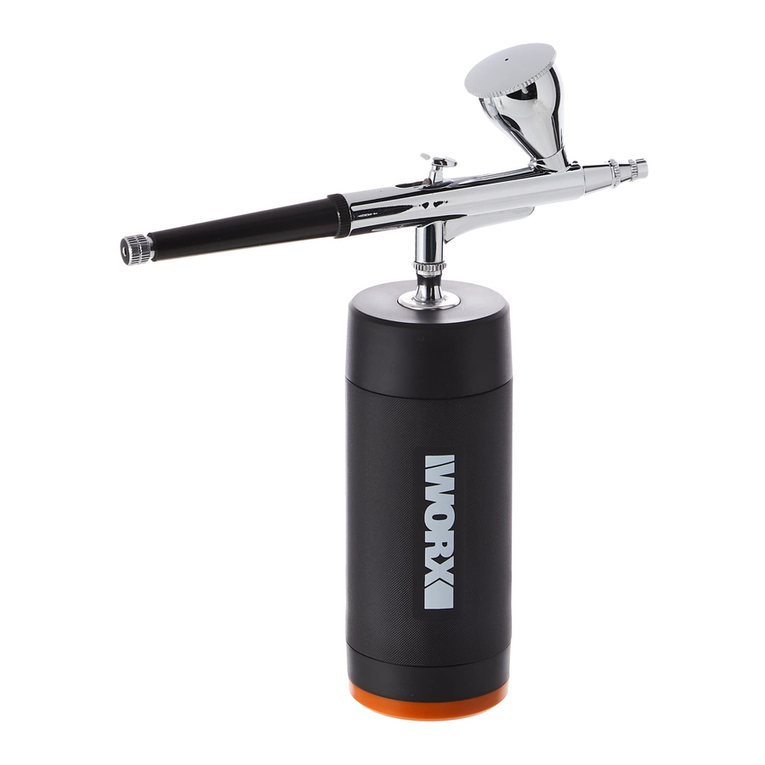
Page 2 SB-2-055-B
Assemble Airbrush to Compressor
Connect the air hose to the compressor
and airbrush, then turn on the compressor.
If using an Airblade™ compressor, adjust
the pressure to between 20 and 30 psi.
Listen for any air leaks in the compressor
or air hose fittings. Point the airbrush
away from you and press down on the
trigger (#14) to start the flow of air through
the airbrush. Place a small amount of
solvent or cleaner into the cup and pull
back on the trigger. This will clean out any
residual factory testing material that may
still be in the airbrush.
Mix Paint and Fill the Removable Cup
Follow the paint manufacturerʼs
instructions and thin the paint with its
proper solvent. Filter it through a nylon
mesh strainer. It is best to "over-reduce"
or prepare the paint relatively thin and
make continuous passes across your
work to achieve the desired shade. This
will also decrease paint buildup on the
needle and cleaning time. The DAGR
features a removable cup. Depending on
the amount of paint you wish to spray, use
the standard 1/3 oz. (9 cc) cup or select
an optional 1/4 oz. (7 cc) or 1/2 oz. (14
cc) cup. For small amounts of material,
simply remove the cup and fill the cup
socket, which will give you best visibility
for close-up work.
GENERAL OPERATION
The DAGR is a double action airbrush
for fine control. Push the trigger down
for air flow and pull the trigger back
for paint flow. For best results during
spraying, keep air flow even when you
have stopped paint flow.
Air Pressure Range
Working pressures vary between 20 and
50 psi, depending on what type of work
is being done, what spray characteristics
are desired, and paint viscosity. Generally,
thicker paints or higher paint flow will
require higher pressures.
Spraying Fine Lines and Detail
To spray a fine line or detail, press the
trigger down for air flow and pull it back
slightly for paint flow while moving the
airbrush very close to the surface. Control
the thickness of the line by adjusting the
distance between the airbrush and the
surface and by adjusting the amount
of paint flow with the trigger. An even
finer line can be achieved by carefully
removing the crown cap (#1) and moving
the airbrush closer to the surface.
NOTE: The needle and nozzle are
very finely machined. A slight bend
on the tip of the needle can result in
an uneven pattern. The crown cap
protects the needle yet still allows fine
lines to be sprayed.
Wide Lines, Fades, and
Background Spraying
For wider lines, fades, and background
spraying, pull the trigger further back for
more paint flow. Increase the distance
between the airbrush and artwork up
to six inches to control the line width.
Increasing the air pressure will also affect
the spray width. The DAGR will spray a
background width of approximately two
inches. Speed of movement controls the
density of the color and fading effects.
Spraying Lines Without Heavy Ends
To spray a fine or wide line without heavy
ends, start moving the airbrush with the
trigger pushed down for air. Then pull the
trigger back for paint flow at the beginning
of the line and stop paint flow at the end,
but continue the motion of the airbrush.
